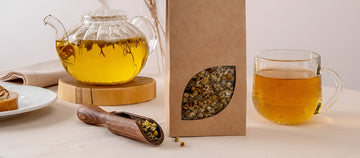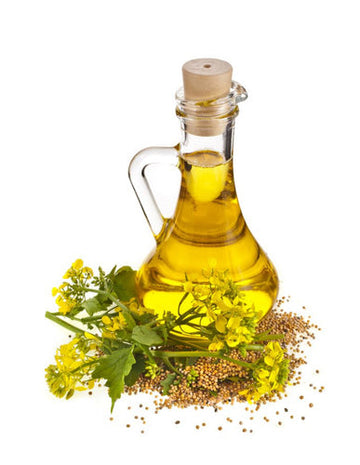What is Circular Beauty?
In my journey through the ever-evolving world of beauty and skincare, I’ve come to appreciate the concept of circular beauty. This approach resonates deeply with me, as it emphasizes not only the importance of self-care and personal beauty but also champions sustainability, ethical practices, and the use of natural ingredients. It embodies a holistic philosophy that intertwines beauty with responsibility, focusing on how our choices impact the planet.
At the heart of circular beauty lies a commitment to sustainability. This means creating products that are not only effective but also environmentally friendly. In this context, I find that handmade soap emerges as a prime example of circular beauty, utilizing natural ingredients and sustainable practices to provide nourishing care for the skin.
The Essence of Circular Beauty
Circular beauty is rooted in the principles of the circular economy, which aims to minimize waste and make the most of resources. This approach encourages me, as a consumer, to think critically about the lifecycle of beauty products. Rather than following a linear model of production and disposal, we ought to strive to embrace circular beauty, thus promoting sustainable sourcing, responsible production, and eco-friendly packaging.
By focusing on sustainability, we advocate for the use of natural ingredients that are not only beneficial for the skin but also for the environment. These ingredients often come from renewable sources and are biodegradable, ensuring that they do not contribute to pollution or waste.
Handmade Soap: A Circular Beauty Staple
For me personally, handmade soap is a quintessential representation of circular beauty. Crafted with care, it often contains natural ingredients like rich butters and nourishing natural oils that are gentle on the skin. The process of saponification, where fats or oils are combined with an alkali to create soap, allows me to appreciate the unique formulations tailored to different skin needs.
The use of rich butters such as shea and cocoa in handmade soap adds a luxurious touch while providing deep hydration. These butters are packed with vitamins and fatty acids that nourish skin, promoting moisture retention and a healthy complexion. Similarly, nourishing natural oils like olive and coconut help to lock in hydration and enhance the soap’s cleansing properties, making it an ideal choice for my skincare routine.
Natural Ingredients: The Foundation of Circular Beauty
Natural ingredients are at the core of my understanding of circular beauty. They offer a myriad of benefits for skin while being kind to the planet. By choosing products made with natural ingredients, you support ethical beauty practices that prioritize the health of both individuals and the environment.
In handmade soap, natural ingredients such as essential oils, herbs, and botanicals not only contribute to the soap’s fragrance but also provide therapeutic benefits. For example, lavender essential oil is known for its calming properties, while tea tree oil offers natural antibacterial benefits. These ingredients enhance the soap’s effectiveness, making it a powerful tool for maintaining healthy skin.
Hydration and Moisture Retention
One of the key benefits of handmade soap infused with rich butters and nourishing natural oils is its ability to provide hydration and moisture retention. Unlike commercial soaps, which often contain synthetic ingredients that can strip the skin of its natural oils, handmade soap is formulated to cleanse without compromising the skin's barrier.
The richness of the butters used in handmade soap creates a protective layer on the skin, helping to lock in moisture. This is particularly important for anyone who values hydration and wants to prevent dryness. By incorporating handmade soap into our daily bathing, we can experience improved hydration and overall skin health, because we are using a product crafted with all natural raw ingredients.
Cruelty-Free Practices in Circular Beauty
A fundamental aspect of circular beauty that I hold dear is the commitment to cruelty-free practices. This means that no animal testing is involved in the development of beauty products, and that natural ingredients are sourced ethically. Many handmade soap brands prioritize cruelty-free methods, ensuring that their products are not only good for the skin but also for animals.
By choosing cruelty-free products, we contribute to a movement that advocates for ethical beauty standards. This commitment aligns perfectly with the principles of circular beauty, which emphasizes respect for all living beings and the environment.
Eco-Friendly Packaging: A Circular Approach
In addition to the products themselves, it’s important to recognize that eco-friendly packaging is a crucial component of circular beauty. Most handmade soap artisans take great care in selecting sustainable materials for their packaging, ensuring that it is recyclable or biodegradable. This reduces the overall environmental impact and supports the goal of waste reduction.By opting for eco-friendly packaging, we can further enhance oour commitment to sustainability. This not only appeals to tthose who are environmentally conscious but also sets a standard for the beauty industry as a whole.
Embracing Ethical Beauty
Circular beauty is inherently tied to my understanding of ethical beauty. This encompasses a broader understanding of beauty that includes not only the products we use but also the values we uphold. Ethical beauty promotes transparency in sourcing, responsible production practices, and a commitment to community well-being.
When we choose handmade soap for example, hand made from natural ingredients and produced with care, we are supporting ethical beauty practices. This creates a positive ripple effect, encouraging brands to prioritize sustainability and responsibility in their operations.
The Future of Circular Beauty
As we become more aware of the impact oour choices have on the environment, we will witness the demand for circular beauty products grow. This shift in consumer behavior presents an opportunity for brands to innovate and adapt their practices to meet these changing expectations.
In the realm of handmade soap, the potential for growth is immense. With a focus on natural ingredients, rich butters, and nourishing natural oils, artisans can create unique, effective products that resonate with consumers who are seeking circular beauty solutions. By embracing saponification and the art of soap-making, these artisans can continue to produce high-quality, sustainable products that enhance skin health while caring for the planet.
Conclusion
Circular beauty is more than just a trend; it represents a fundamental shift in how we should approach beauty and skincare. By prioritizing sustainability, ethical practices, and the use of natural ingredients, we can contribute to creating a more responsible beauty industry that benefits both individuals and the environment.So as we embrace circular beauty, lets strive to make conscious choices that reflect oour values and contribute to a healthier planet. Together, we can redefine beauty and create a future where self-care and sustainability coexist harmoniously.
#CircularBeauty #HandmadeSoap #NaturalIngredients #Saponification #RichButters #NourishingNaturalOils #Hydration #MoistureRetention #CrueltyFree #Sustainability #EcoFriendlyPackaging #EthicalBeauty #HealthySkin #SustainableSkincare #OrganicBeauty #GreenBeauty #EcoConscious #BeautyWithPurpose #CleanBeauty #SupportSmallBusiness #Tea-licious #tea






